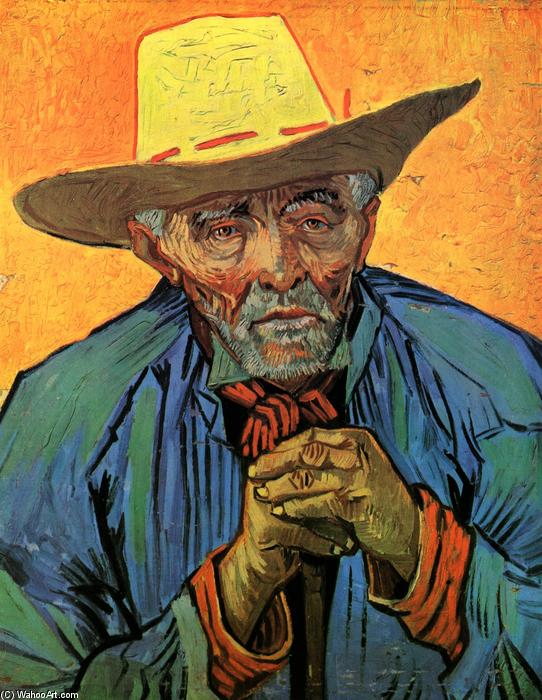
   |
[Misc] (Top 100 Paintings - 068) Portrait of Patience Escalier by Vincent Van Gogh
최고관리자 | 21-01-25 09:45

(1) "Write 2 Speak 전체 목록 & 모든 콘텐츠"를 보시려면 "Write 2 Speak = 유튜브 채널"에
가입(subscribe - 클릭)후 "본인의 유튜브 ID & Write2Speak 등록 ID"를 "write2speak@daum.net"로
이메일로 보내 주시면 확인 후 본 사이트 정회원으로 등급됩니다. 많은 신청 기다리겠습니다.
(2) 참고로, "Write 2 Speak"에 올라오는 유튜브 contents는 정기적으로 삭제가 되며, "전체 내용"을 보시려면
위에 절차를 따라야만 "Write 2 Speak -> 자료실(클릭)"영역에서 모든 내용을 다시 볼 수 있습니다.
****************************************************************************************
Portrait of Patience Escalier by Vincent Van Gogh
Portrait of Patience Escalier is a painting of 1888 by the Russian Impressionist Vincent van Gogh (1853–1890). The oil on canvas painting is a part of the Improvisations series and is drawn on Post-Impressionism style and portrait genre and it measures 69 by 56 centimeters. It was painted in Arles-sur-tech, France and is in the private collection of Philip Niarchos. The painting was a result of Van Gogh's desire to paint an older peasant who resembled his father. Patience Escalier was a gardener and a shephard who resembles like his father in features. He painted two versions of this portrait.
Vincent van Gogh's The Portrait of Patience Escalier marks a significant turning point during the artist's prolific Arles period. Meyer Shapiro describes the work as: "... perhaps the last realistic portrait of a peasant in the tradition of Western painting. It is perhaps also the only great portrait of a peasant."
In some ways this work encapsulates the best aspects of the entire breadth of Vincent van Gogh's career. Van Gogh always felt an affinity toward the common labourer. This is clear in many of his early Nuenen paintings and sketches as well as his copies of the works the painter Jean-François Millet who also favoured labourers and peasants as subjects. The choice of Patience Escalier clearly shows that Van Gogh never lost his love of "the true peasant race". And yet, in terms of style, this painting marks a radical departure from the peasant works of Van Gogh's Nuenen period and is even a stark contrast to the works he produced only a few months previously. In many ways The Portrait of Patience Escalier stands out as a pivotal work in Van Gogh's career.
In a letter to Theo (520) Van Gogh writes "... I am returning to the ideas I had in the country before I knew the impressionists". Vincent refers to this painting in his letter and it's noteworthy that he mentions specifically that his outlook toward his painting was returning to a period before he came Paris. During the two years he lived with his brother in Paris Vincent came to know many of the great artists of the time: Gauguin, Lautrec, Pissarro and Seurat to name a few. Their style and unusual new ideas would influences Vincent's own technique, but it's important to note that in letter 520 Van Gogh is suggesting that he is reverting to an earlier approach and, at the same time, moving beyond what he was able to learn from the Impressionists. Van Gogh was evolving into a new and compelling style that was uniquely his own.
Vincent's use of color in The Portrait of Patience Escalier is bold and unusual. In a letter to Emile Bernard (B15) Vincent writes of the work: "This time again, the colour suggests the sweltering air of the harvest in the middle of the day, in mid-summer, and without that it would be a different picture."
   |




